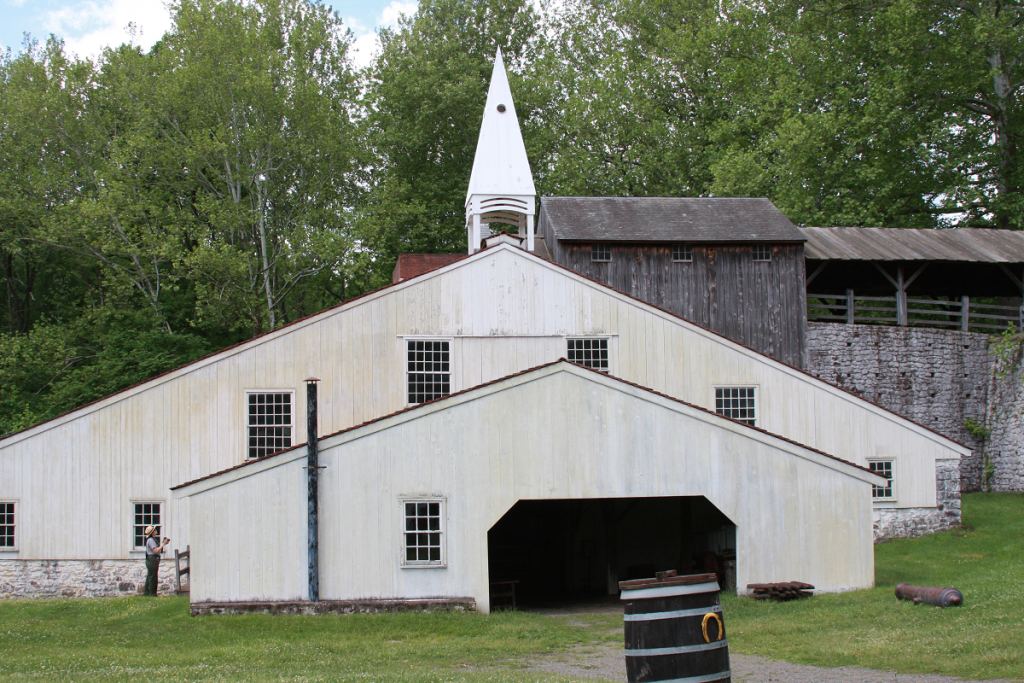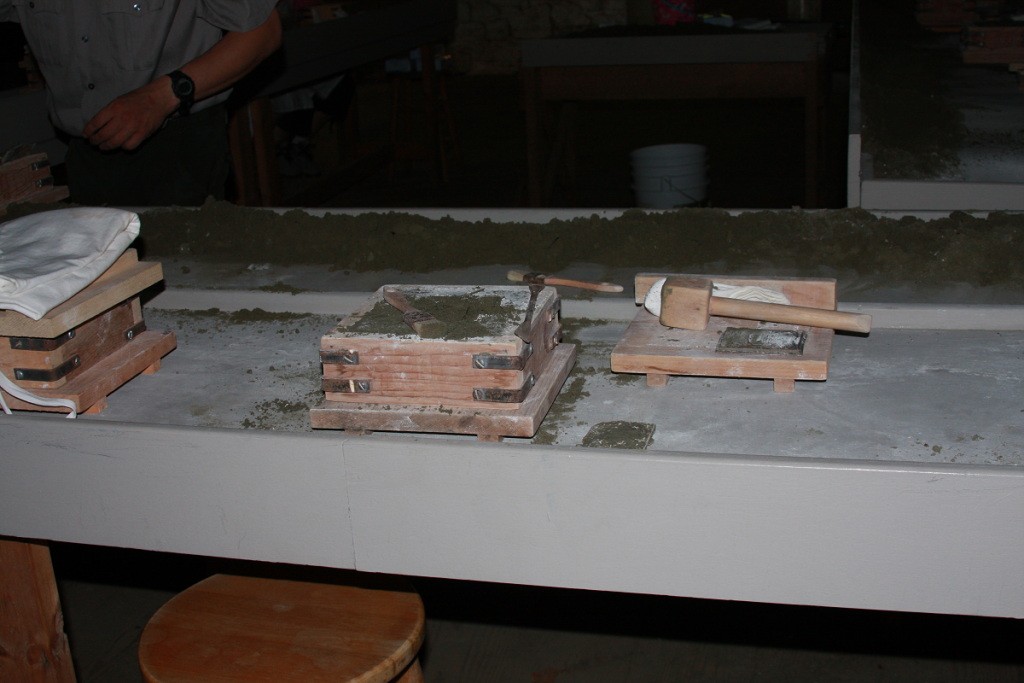May 29, 2022 @ 09:30 EDT
Site Visit #30
Hopewell Furnace was one of many furnaces dotting southeastern Pennsylvania at the time of the American Revolution. The raw materials needed to make wrought iron existed in abundance – so much that Britain wanted to limit the colonial production. At Hopewell and other furnaces, that order was ignored.
Built in 1771, the Hopewell Furnace was built in a remote location close to many of the resources it would need, with a reliable water source to turn a huge wheel. Unlike mills, where water turned a wheel that would turn a saw blade or process a grain crop, the giant wheel at Hopewell powered two huge bellows which forced air into the furnace. The forced air helped heat the furnace to over 3000°F.

Because of the remote locations, a small community existed on the lands owned by Mark Bird, owner of the furnace. Houses were provided for the workers and a company store existed providing most of the basic necessities. Unlike some company stores in other industries, where workers were forced to buy their goods at inflated prices, apparently the Hopewell store priced items the same as they cost in larger cities.
Originally, some of the workers were slaves, but when Pennsylvania outlawed slavery, many stayed on, working at the furnace. According to presentations at the National Park site, everyone was paid the same for the same work regardless of race.
Sadly, Bird lost his lands due to his patriotism. He stopped creating consumer goods and switched to cannon and other needs of war during the Revolution. After the war, the government did not repay him for the products he produced, and the post-war economic recession made things worse. New owners found the going rough and closed in 1808. Clement Brooke reopened the furnace in 1816 and it remained productive until post-Civil War. Much bigger and more modern plants produced iron and steel cheaper than Hopewell, and the final blast came in June 1883.
Many of the original buildings remain including the Ironmaster’s mansion (where some workers actually lived too), workers’ houses, blacksmith shop, charcoal pits, coal house, cast house, and so on. A Visitor’s Center sits atop the hillside above the furnace. Inside is a small museum of local artifacts and a short (15-minute) movie on the history of the area.
A ranger program was held every hour just outside the Center’s back door. The one I attended discussed the steps to making wrought iron from iron ore. It was quite interesting as he described the difference between pig iron, cast iron, and wrought iron. He also described how local limestone was used in the process, and what “slag” is (a waste byproduct of the smelting).
After watching the movie and the ranger talk, I headed to the main furnace, where a user participation exercise was about to begin. Under the guidance of a park ranger, everyone present was given a molding kit. We were going to make a sand mold of the park’s logo, then use the mold to make a cast-iron copy. For safety, though, the park decided against using 3000° molten lead in favor of a plaster-like mixture!

We had a square wooden form, into which we put the metal plate with the logo. Next, sand was packed on top filling the wooden form. It was then tamped down firmly. The entire mold was then flipped over and the original metal plate carefully removed. Into the sand mold the ranger poured our substitute molten lead. After letting it set for about five minutes, we carefully removed our souvenir. Sand was carefully brushed off as best as possible. The ranger suggested waiting 3-4 days and running some cold water over the resulting piece to remove any lingering sand.
The point of the exercise was to see the steps involved in creating a mold into which the molten lead was poured, creating stoves, tools, and other iron needs of the day. About 10 of us took part and as best I could see, everyone enjoyed it. As seems to be the case at every park, the ranger was very knowledgeable about the process, and very outgoing in his technique making sure everyone understood and created their own piece.
With today’s visit, I have reached thirty parks. Only 393 remain!
Steve